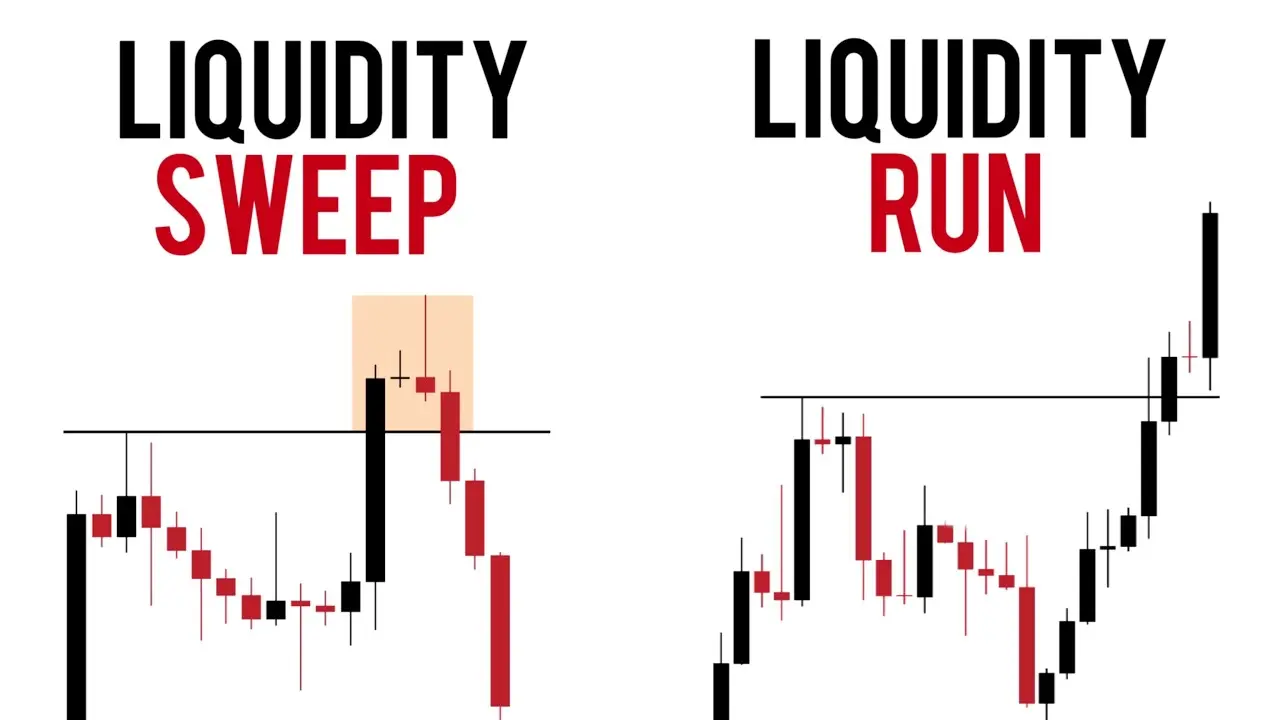If you’ve ever wondered why the market turns exactly where it does — just above your stop, or just before your entry — you’re not alone.What looks like randomness to most retail traders is often a structured dance of institutional order flow. The reality is, large players don’t move in and out of positions like retail traders; they operate through algorithms, dark pools, iceberg orders, and layered execution designed to hide intent and minimize impact.Yet, with the right order flow tools, you can see their footprints.In this article, we’ll break down the five most powerful institutional order flow tools that traders use to understand where liquidity is hiding, when volume is real, and how to align with institutional flow rather than getting trapped by it.Each tool gives you a window into how money actually moves — not what it looks like on a simple candlestick chart.
1. The Footprint Chart — Where True Imbalance Lives
The footprint chart (also called volume imprints or bid-ask charts) is one of the most direct tools to visualize institutional activity.
Instead of showing only price and time, footprint charts display traded volume at each price level, broken down by aggressive buyers (market orders) and sellers.
This is where the market’s true story unfolds. Every candle you’ve ever seen is just the result of these micro-battles between buyers and sellers.
Institutions operate through algorithms that either:
- Absorb liquidity (passively sitting on the bid or ask to accumulate size)
- Or attack liquidity (aggressively lifting offers or hitting bids to create movement)
The footprint chart reveals these behaviors by showing delta — the net difference between buying and selling aggression.
How to Read It:
- Positive Delta + No Follow-Through: Institutions are absorbing buy pressure — potential short setup.
- Negative Delta + No Downside Continuation: Absorption on the bid — potential long setup.
- Stacked Imbalances: Multiple price levels showing aggressive buying or selling — momentum confirmation.
When you combine footprint data with context (e.g., near LVNs or VWAP levels), you’re effectively reading the market in real time, the same way institutional execution desks do.
Footprint charts don’t predict — they confirm. They tell you when the “invisible hand” is actually acting, not just theorized.
2. Cumulative Delta and Absorption — Tracking the Invisible Tug of War
If the footprint chart is the microscope, Cumulative Delta is the telescope. It aggregates buying and selling pressure over time, showing how aggressive orders evolve throughout a session.
In essence, it tracks the tug of war between market participants.
While price shows what happened, cumulative delta shows how it happened.
Institutional Insights:
- Price up, Delta flat or negative: Institutions are selling into retail buying — hidden distribution.
- Price down, Delta flat or positive: Institutions are accumulating against panic sellers — hidden accumulation.
- Delta divergence at key levels: Indicates that aggressive traders are being absorbed, often before reversals.
This is where institutional presence becomes visible: large players need liquidity. They’ll let retail traders push the market one way, only to absorb their aggression and fade the move.
When you start to notice delta absorption near LVNs, prior session highs/lows, or option gamma walls, you’re literally seeing the market transfer risk from weak hands to strong hands.
Practical Application:
Pair Cumulative Delta with your session structure:
- Use it to validate breakouts (is delta confirming momentum?)
- Or to identify traps (is delta diverging while price extends?)
Over time, this builds a sixth sense for flow — understanding when to trust a move and when to fade it.
3. Iceberg Orders and Hidden Liquidity — The True Hand of Institutions
Institutions rarely show their full hand.
If a fund wants to buy 50,000 contracts, it doesn’t simply place that order in the book — that would move the market violently against them. Instead, they use iceberg orders and hidden liquidity to mask their true intent.
An iceberg order displays only a small portion of its total size. As that portion gets filled, the order replenishes automatically — like an iceberg melting from the top, with most of its mass hidden below the surface.
With tools like Bookmap, ExoCharts, or Jigsaw, traders can visualize these iceberg behaviors by tracking:
- Reappearing bid/ask liquidity at the same price
- Unusual absorption where a level trades thousands of contracts but price barely moves
- Spoofing/Layering activity, where liquidity rapidly appears and disappears to manipulate reactions
These tools expose when an institutional desk is quietly defending or accumulating size.
Example:
Imagine ES futures approaching a prior LVN. Suddenly, you see 800 contracts on the offer get hit repeatedly — but price barely ticks higher.
That’s passive absorption.
Institutions are selling size into retail buying aggression, preparing for a reversal.
Spotting these micro-behaviors provides traders with an unfair level of clarity — the kind of insight once reserved only for high-frequency trading firms.
4. Volume Profile and Market Profile — Mapping the Battlefield
If you want to think like an institutional trader, you need to think in terms of value, not price.
Volume Profile and Market Profile tools help you do exactly that.
Institutions don’t buy or sell because of chart patterns; they act based on where value is established and where inefficiencies exist.
Volume Profile visualizes this through nodes of traded volume — showing where the market spent time and accepted value (HVNs) versus where it rejected value (LVNs).
For an institutional desk, this is crucial because:
- HVNs act as liquidity pools — ideal for entering or exiting large positions without slippage.
- LVNs represent imbalances — ideal for scalps or breakouts when liquidity is thin.
Market Profile adds the time component, showing how and when the market accepted value. This combination allows traders to identify:
- Value migrations (institutional repositioning)
- Poor highs/lows (unfinished auctions)
- Single prints (aggressive initiative moves)
Application for Day Traders:
Institutions use these tools to align execution with auction behavior:
- Wait for acceptance before positioning in a trend
- Trade rejections around LVNs and poor structure
- Combine profiles with order flow to confirm real intent
In short, profiles show where the market wants to be; order flow shows how it’s getting there.
Together, they form the foundation of professional-grade trade planning.
5. Options Data, GEX, and Dealer Flow — The Invisible Gravity of the Market
Perhaps the most underappreciated institutional tool in short-term trading is Options and GEX (Gamma Exposure) data.
While options may seem unrelated to intraday futures or equities, they directly influence how market makers hedge their positions — which in turn drives order flow in the underlying instruments.
Here’s how it works:
- Positive Gamma: Dealers are hedging against price moves. This creates mean-reverting behavior — they sell into rallies and buy into dips.
- Negative Gamma: Dealers hedge with price moves. This creates expansion and volatility — momentum tends to accelerate.
By tracking GEX levels, traders can identify where the market is likely to magnetize (high gamma zones) and where volatility is likely to expand (gamma cliffs).
Institutional Insight:
- Near expiry, dealer hedging flows often dominate intraday direction.
- Knowing where major option strikes sit allows you to anticipate where liquidity hunts will occur.
- Combining this with order flow tools helps you see when institutional hedging aligns with execution.
For example, if order flow shows strong buy delta but GEX data reveals a large negative gamma zone above, you may be looking at a trap — price gets pushed up for dealers to offload hedges.
Pro Tip:
You don’t need to trade options to benefit from them.
You just need to understand how option positioning shapes the tape.
This is why institutional traders often say, “If you don’t know where dealers are positioned, you’re trading blind.”
Conclusion: Seeing What Institutions See
Institutional order flow tools don’t just make your charts prettier — they give you the language of liquidity.
Once you can read this language, everything else about trading changes. Candlesticks stop being mysterious; price reactions start making sense; traps become visible before they happen.
To summarize:
- Footprint charts show who’s in control — buyers or sellers.
- Cumulative Delta reveals hidden absorption and divergence.
- Iceberg tracking exposes concealed institutional intent.
- Volume and Market Profiles map the battlefield of value and imbalance.
- Options & GEX data reveal the gravitational forces driving intraday movement.
Mastering these tools takes time, but the reward is immense:
You stop reacting to price and start anticipating behavior. You shift from guessing to reading.
And that’s what trading like an institution truly means — understanding not just where price is, but why it’s there.

.png)



